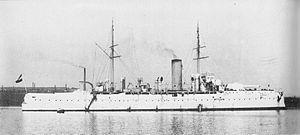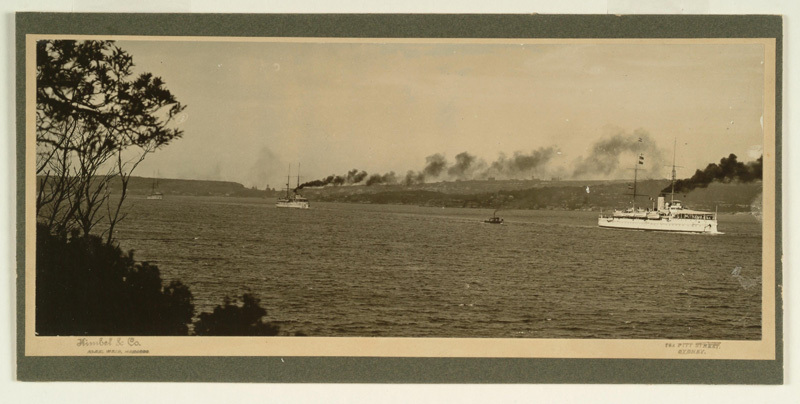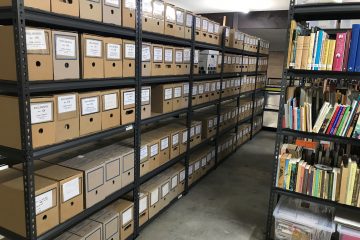
In 1910 the HNLMS Koningin Regentes undertook a cruise to Australia to show the flag. After leaving Surabaya on 15 August 1910, Koningin Regentes and both her sister ships, De Ruyter and HNLMS Hertog Hendrik, visited the ports of Brisbane, Melbourne, Sydney, Fremantle and several others.
The visit was followed in the Australian press.

Interestingly several Dutch sailors deserted the ships when they arrived in Fremantle.
Sydney Morning Herald article 6 September 1910
DUTCH NAVAL SQUADRON. |ARRANGEMENTS FOR ITS RECEPTION
Last week the Netherlands Chamber of Commerce appointed a committee to make arrangements for the reception of the visiting Dutch squadron. Yesterday a special meeting was held to receive the report of this committee, and a comprehensive provisional programme was adopted. The squadron is expected to arrive in Sydney on Wednesday morning next, but it is not known yet whether the Governor-General will be in Sydney at the time of the visit. The squadron will remain here for about a week, and after the official calls the Acting-Consul for the Netherlands will give a dinner in honour of the occasion.
On the afternoon following the arrival a reception at Cabarita Park will be tendered to the officers by the Netherlands Chamber of Commerce, and in the evening they will be entertained by the Lord Mayor at dinner.
The remainder of the programme is made up us follows: Reception by Sydney Chamber of Commerce at Royal Exchange; Lady Poore’s fete at Greenoaks, Darling Point; petty officers and men, matinee at Tivoli; theatre party offered by Mr. Stuart, manager of the Royal Packet S.N. Company; officers reception by Government of N.S.W. at Parliament House; petty officers and men, sports at Lyne Park: British Vice-Admirals’ dinner; “at home” at Rose Bay Golf Club offered by Mr. G. F. Earp; officers, British officers’ dinner; petty officers and men, entertainment at Royal Naval House; petty officers and men, trip to Blue Mountains,. offered by Government of N.S.W. ; officers. Colonel Burns’s at home;” Governor’s dinner; trip to Blue Mountains, offered by Government of N.S.W.; petty officers and men, entertainment at Royal Naval House.
Sydney Morning Herald 1 October 1910
WITH THE DUTCH NAVY. FIGHTING THE CHINESE.
The Dutch Navy in the East has no fear of the yellow man (says the Sydney “Telegraph”).’ There is little danger, they think, of an invasion from the North. China has room enough in her own country, and Japan in Korea, for expansion. “Besides,” said Lieutenant Pieren, of the Koningin Regentes, “I don’t think the Japanese would go so far from home. And there are always the Philippine Islands between this and the Japanese. That is very nice for us!”
Lieutenant Pieren has had a great deal of experience in the East Indies with the Dutch Navy. “We could not ourselves fight with a great Power.” he says. “But if there was trouble between two great Powers, our fleet is good enough to make our friendship valuable.”
Were nor the Dutch afraid of losing their Eastern possessions’ “No, no.” said! he; “we are not at all afraid. We are a small Power, but we think if one great Power would like to take our counties, another would say ‘No.’ “
The headquarters of the Dutch Navy in the East is, at Sourabaya, but a small island called Lombok is its training ground. “Ten years ago,” said Lieutenant Pieren, “there were 30 gunboats, but now we have five big ships and 16 torpedo boats. Next year two destroyers are coming out, and soon we will have eight destroyers.
FINE TORPEDOISTS.
”Our torpedo-boats are very good, and our officers and men are very well trained”.
The Chief of the Whitehead firm of torpedo-makers says that the torpedo officers of Denmark and Holland are always the best. We have just had four months practice with torpedo-boats and big ships at Lombok. We always practise there, because the weather is good and it is very cool. Nearly every day we have been launching torpedoes. We have also two mine-laying vessels.
“We have always business with the natives on several islands. There are many troubles with them, and the ships have to support the troops and cover their landing, or land men themselves.
We don’t use the big vessels against the natives, only gunboats, because the water is so shallow near the shores. Sometimes we go up the rivers in the gunboats when there is trouble with one of the villages.
“I have commanded a gunboat there when she made some expeditions against a village on the island of Sumbawa. That was in 1908. We are very busy in the ‘ East Indies. We register the natives. When they have cattle and property, they have to pay a kind of fax, so they must be registered. Some villages don’t like to be registered, and then we have to make the expeditions.
A MARCH THROUGH THE SWAMP.
“This village did not like it. At the first fighting the natives had got together in a campong. It was not far from a bay of the sea – about five hours. We come up in the gunboat and then walk for those five hours through jungle and a swamp so deep and we call on them to lay down their guns. For they have guns, though -it is against the law for anyone to import guns into the Dutch East Indies. Not even a European; all must have a permit. But the guns are smuggled in by little- vessels from Singapore, and they are sold-to the native villages. Well, when we call on these people to lay, down their arms they do not like it, so they begin to shoot the guns at us. Six of our men are killed, and a great many wounded. The natives have not only guns, but lances. They do not throw them; they stab with them so they are very sharp and make a painful wound. On each lance there is, fastened a talisman, to make it aim’ straight. This talisman is only a piece of paper, with something written on it, that the native buys from his priest.
A OPERA COMIQUE.”
”On the second expedition we had to take a campong. There were three ways to reach it. Two of these ways were blocked up with great trees that the natives had cut down, and where the other was they had heavy stones collected to roll over on us. Now there is a fourth way but the natives don’t like it, became you” must pass a river where there are great crocodiles. So, they think the Dutchmen will not go that way. But we are not afraid, and we go through, that river at 1 o’clock at night, and the crocodiles are not present. When it is light the natives see us and begin to shoot from their fortress. Sometimes the door of the fortress is opened, and they roll out a big gun, a cannon, and shoot at us with it. It was like opera comique ! But it was not all comique, for there were men dead and wounded. Then you rush in and sweep them out and take- that camping.
A WAR AND NO WAR.
“What you call the war with the Achinese on the island of Sumatra, has lasted 33 years. But it is not a war.
Only sometimes we make expeditions through Acheen from different points, to keep things in order. There are no battles. It is the men in the country, in the bush, that are supporting the war.
The villages fight by themselves against us, and it is not yet safe for a European to go over the country by himself. But last year things were much more quiet.
The Atchinese are a very independent race. We have always tried to have them friendly with us, but it is not possible.
They robbed a shipwrecked ship, and afterwards they robbed another ship that was not wrecked, and so we had to send out an expedition. But they did not kill the men on the ships; they let them run away.
THE DUTCH ARMY.
“The Dutch Army in the Indies is 30.000 about 20.000 Europeans and the rest Javanese and Ambonese. The Java men are not good soldiers; they are too timid. But the Ambonese are as good as Europeans. We keep about 8,000 men, half Europeans and half natives, in Acheen. We make these expeditions through the’ country, and now the inhabitants are registered, and for every weapon they must have a permit. It is not it war, only guerrilla warfare. It is only that the men do not like to be interfered with. And it is pretty quiet now. Our garrison is at Kotta Radja and other place-. We have railways for carrying the soldiers, and we have great sugar companies, A great part of the sugar was sold to Japan, but now the Chinese also have factories at Formosa, and we must lose a great deal of our trade. And we have good tobacco in Deli, in Sumatra. Once in seven years it a good year. Then the tobacco planters all get rich. But the other six are bad years.
“The Chinese and Japanese in Java are very rich. But we don’t care for them. We say the Java man is- arm, but the Chinese man gathers in the money. But we have schools for the Chinese in Java, and they are grateful ”


